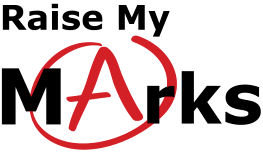What are learning centres? Learning centers are places like Kumon, Mathnasium, Sylvan Learning Center, Oxford Learning etc. Private, for profit institutions that students can go to after school hours for supplementary learning in subject areas they are currently or will be studying at school. In may cultures it is commonplace for children to go to school after their regular school hours. We will only consider the pros and cons of learning centres here in Canada.
What is a learning center? A learning centre is a place where students go for additional coaching / tutoring in a particular subject or subjects after regular school hours. They are usually privately run and owned. Some of the more commonly known learning
centres are,
- Kumon
- Mathnasium
- Oxford
learning centre - Sylvan
learning
Below are some of the pros and cons of learning centers. These have resulted from either from personal experience working in a learning centre or from the comments of parents that have tried them.
Pros of learning centers
- They are open after school hours and on weekends
- In many cases they have a particular method or system that has worked time and again to help students improve in a particular subject (otherwise they would not be in business)
- They have regularly scheduled hours so you are guaranteed have a place to go for the instruction you are paying for. You can be assured their staff/tutors have a minimal level of knowledge of the subject.
Cons of learning centers
- They do have fixed hours and a brick and mortar location so you do have to go to them during those hours. So there is little flexibility.
- The student still may not be grasping the subject with the new method presented at the learning centre.
- It may feel like being in “school” again and so “boring”.
- Since some may have their own system of learning, it can take quite a while to see improvements which in some cases may be too late for the student to through the course they are currently struggling with.
- The one on one connection that may be necessary for some students who are struggling may not be sufficient at a learning centre.
- It can be expensive or very comparable in price to a private tutor.
All this aside, it seems there was something to Mr. Kumon’s methods. He opened his first learning centre in 1958 and then opened the first learning centre outside of Japan in1974. Since then, Kumon learning centres have opened up across the world and is a staple for learning of mathematics and reading. [4] I enjoyed reading about how Kumon started. Then I decided to do a bit of searching on what people thought about Kumon now. There’s a lot of mixed feeling about Kumon and its methods. [1, 2, 3, 5 6, 7]
“It’s easy to start.” One of the most well known learning centres out there is Kumon. I heard about Kumon when I was young and grew up seeing it around. To me, I associated Kumon with mathematics excellence. I never really know much about it, how it started, its history. So, I decided to look up Kumon’s history and I found a few interesting facts. It is a lot older than I thought. It was founded in 1954 I Japan by of course a Mr. Kumon. Mr. Kumon was a math teacher and wanted to help his son enjoy math and be prepared for his college entrance exams. He felt or observed that having a good grasp of the basics of mathematics, arithmetic, was necessary. It seems he developed a series of worksheets for his son to work on after school. It seems through dedicated practice with these worksheets his son was able to solve differential equations and integral calculus by the time he was in grade 6. This is usually first year university material here in Canada. My views on mathematics in Canada, is another post!
“It eventually works.”
“Can take 6 months to a year to see change.”
“It’s expensive.”
Anywhere from $90-$180US per subject.
“It’s time consuming.”
“It works but it’s boring.”
I have seen some reviews of people who work there say that they aren’t allowed to help the students but let the students figure it out for themselves. So, students will
struggle until they get it.
I really liked this one, “Kumon turns out arithmeticians not mathematicians.”
There is homework students have to do if they don’t finish the work at the centre.
I read in one post that the older a student is, that is the higher the grade level of the student, when they start at Kumon, the higher the dropout rate from Kumon. It
seems everyone starts at the “beginning” regardless of where you are in your
schooling.
Learning centres have their place and they are good option but they are not the only option. As with anything, before investing your money, you need to do your homework to see what the best investment for your money is.
References:
- What
are the benefits and drawbacks of the Kumon Teaching method?, Jason Slaton,
April 2016, Quora, URL: https://www.quora.com/What-are-the-benefits-and-drawbacks-of-the-Kumon-teaching-method - About
Kumon – The Good, The Bad and The Ugly, MathsInsider, URL: http://www.mathsinsider.com/about-kumon-the-good-the-bad-and-the-ugly/ - Kumon
pros and cons, School Entrance Tests, URL: https://www.schoolentrancetests.com/2018/09/what-is-kumon-and-could-it-help-my-child-with-their-education/ - The History of Kumon, Kumon, Sunnyvale, Santa Clara, URL: https://www.kumonsunnyvale.com/history
- What
do you think of Kumon?, James Gardner, Aug 2017, Quora, URL: https://www.quora.com/What-do-you-think-of-Kumon - Reporter’s
Notebook Does Kumon Work? Christine Allixon, Jan 2000, DMagazine, URL: https://www.dmagazine.com/publications/d-magazine/2000/january/reporters-notebook-does-kumon-work/ - Kumon
Prices and Cost Guide, Tom G., Tutors.com, URL: https://tutors.com/costs/kumon-cost




